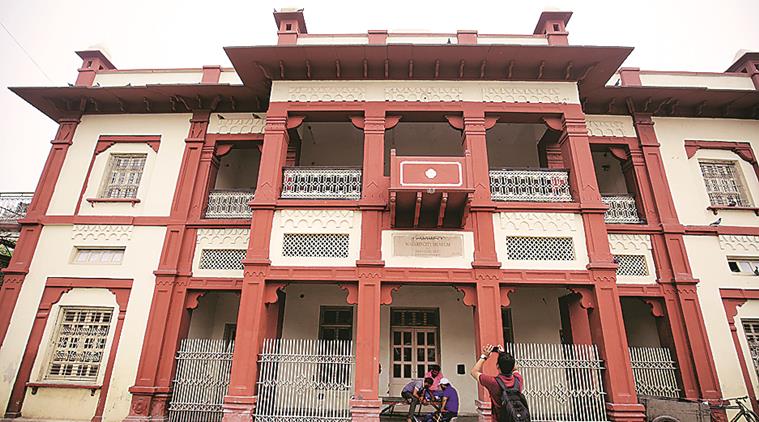 The Walled City museum in old Delhi. (Express Photo: Praveen Khanna)
The Walled City museum in old Delhi. (Express Photo: Praveen Khanna)
Since it was built in 1929, the palatial haveli at Lahori Gate has donned several roles — that of a dispensary, a museum, a residential building and most recently, an abandoned building used mostly by pigeons and a barber to run his makeshift shop. At the crossroads of spice market Khari Baoli and the infamous GB road, another haveli, Shri Narayan haveli, also stands neglected.
For decades, the haveli at Lahori Gate functioned as a dispensary before it was turned into Walled City museum in 2004 with the support of then Chandni Chowk MP Vijay Goel with an aim to showcase the cultural history of old Delhi. More than a decade later, plans to redevelop the museum are in the offing with the North Municipal Corporation Department floating a tender for “providing consultancy services for the development of the museum”. Pradeep Bansal, chief engineer, MCD-Chandni Chowk, said, “Once we get sufficient invitations for the consultancy bid, we will start the bidding for museum restoration too. A few months ago, we got the walls of the rooms painted…our estimated budget is Rs 3 crore.”
On a broken bench in the courtyard, three men play Ludo on their phones, while in another corner, Nanhe (46) tends to unruly beards at his makeshift barbershop. He is also the keeper of keys. “I’ve been working here for 35 years…this was a dispensary and it worked 24X7. Then the museum came up with fancy chandeliers, old paintings, and photographs hung on the walls. A lot of people showed up at the inauguration… But it was a museum only for a few days. Since then, it has been deserted,” he said.
Inside, pigeons have made the abandoned hallways their home. There are no ornamental chandeliers or switchboards inside and it looks like there was never a dispensary or museum. As work on the museum has begun, albeit slowly, many residents are pondering over the purpose. “You want to see old Delhi culture, you will find it in the lanes…you don’t need a museum. It’s best to turn it into a dispensary as it will help labourers who work here and get injured often,” said Shyam Sundar (67), a jute merchant.
Pointing at the stitches on his chin, Sundar said, “I got these stitches at the dispensary…they treated all day and night for everything. My father set up shop here in 1936 and by that time the haveli had been turned into a dispensary.”
Ravi Kaptan, councillor of Chandni Chowk ward, agrees with Sundar. “I spoke to Dr Harsh Vardhan four months ago regarding opening a health centre here. There were no takers for the museum because this area is a commercial hub and is not frequented by tourists,” he said.
On the other hand, Goel, who claims to have “located the haveli and turned the dumpyard of a dispensary into a museum”, said, “The Chandni Chowk culture is no longer visible on the streets because of rampant encroachment. The purpose of the museum is to showcase the food, culture, language of Chandni Chowk. In 2004, I used Rs 50 lakh from my MCD fund to turn it into a museum but the MCD failed it.”
With inputs from Anshuman Singh